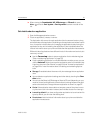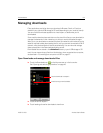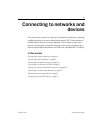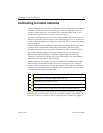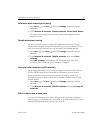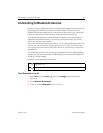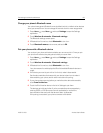
Connecting to networks and devices 58
AUG-2.3-103 Android User’s Guide
Connecting to mobile networks
When you assemble your phone with a SIM card from your wireless service provider (if
necessary—CDMA phones don’t use a SIM), your phone is configured to use your
provider’s mobile networks for voice calls and for transmitting data. (Refer to your
phone’s owner’s guide and your carrier for more information.)
Your phone is configured to work with many mobile carriers’ networks. If your phone
does not connect to a network when you insert a SIM card and turn it on, contact your
carrier to obtain the details of its access point name. See “Edit or create a new access
point” on page 59.
Different locations may have different mobile networks available. Initially, your phone
is configured to use the fastest mobile network available for data. But you can
configure your phone to use only a slower 2G network for data, to extend the life of
your battery between charges. You can also configure your phone to access a
different set of networks entirely, or to behave in special ways when roaming.
The icons in the Status bar indicate which kind of data network you’re connected to
and the voice and data network signal strength.
Network status icons turn green if you have a Google Account added to your phone
and the phone is connected to Google services, for syncing your Gmail, Calendar
events, contacts, for backing up your settings, and so on. If you don’t have a Google
Account or if, for example, you’re connected to a Wi-Fi network that is not connected
to the Internet, the network icons are white.
When you’re connected to slower networks, you may want to postpone using your
phone for data-intensive tasks until you are connected to a faster network again, or
find a Wi-Fi network to connect to. See “Connecting to Wi-Fi networks” on page 61.
Connected to the fastest 3G networks (UMTS or HSDPA)
Connected to the second-fastest network (EDGE)
Connected to a 2G network (GPRS)
The more bars are lit, the stronger the wireless signal
Connected to another wireless service provider’s network (roaming)




